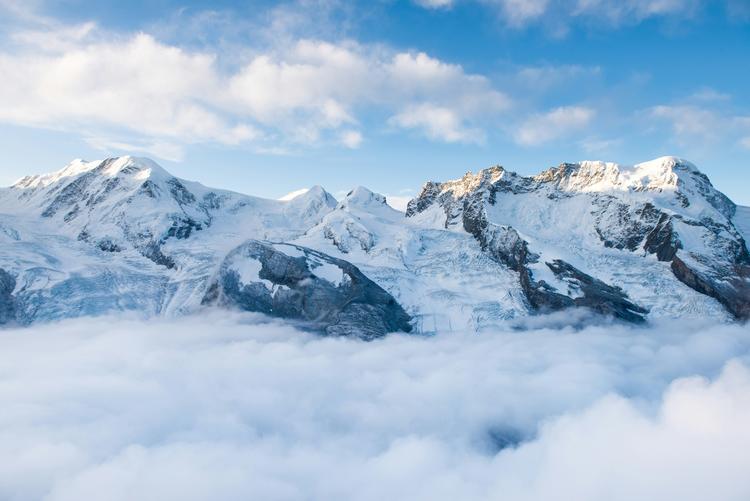Ann Arbor (Informed Comment) – A new multi-author study in Nature finds that the world’s 200,000 glaciers are melting at an increasingly alarming rate. If all of them melted, it would raise sea level by over a foot, a disaster for coastal communities around the world. And it isn’t just a matter of coasts — the melting of the glaciers causes mudslides and flash floods at higher inland elevations, as well as upsetting land and marine ecosystems. Glacier melt is one of the ways we know that the earth is being heated up by humans burning coal, fossil gas and petroleum, putting carbon dioxide into the atmosphere. CO2 absorbs and deflects infrared radiation, keeping the heat of the sun that hits the surface of the earth from radiating back out into outer space.
The BBC’s Mark Poynting quotes Andy Shepherd, head of the Department of Geography and Environment at Northumbria University, as saying, “Every centimetre ([less than half an inch] of sea-level rise exposes another 2 million people to annual flooding somewhere on our planet.”
Poynting himself points out that, in addition, people depend on glacier ice and its seasonal melt for drinking and irrigation water, and when it is gone, it is gone — not coming back. Every little bit of warming we can avoid is a few glaciers that don’t melt.
Back to the new study: Glaciers are sort of like the parable of the blind men and the elephant told by the great Muslim mystic Jalal al-Din Rumi. The blind men are asked what an elephant is like. The one that touches the trunk says it is like a long tube. The one that touches a leg says it is like a column. The one that touches its side says it is like a wall. The one that touches the tusk says it is like a spear. Etc. Measuring glacier loss in the European Alps, in Pakistan’s Himalayas, and in Antarctica yields varying results because some areas of the world are heating up faster than others. Also, some scientists were using satellite imagery, while others were using lasers and radar.
So in the Nature paper, scientists using various techniques combined methods to create a more consistent picture of the period from 2000 to 2023. They discovered that glaciers have been losing about 273 billion metric tons (gigatons) of ice every year.
But that’s not the worst of it. The rate of ice loss increased by roughly a fourth to a third in the last decade of the study, 2012-2023, compared to the first decade of the twenty-first century. In 2023 alone glaciers lost as much as 548 billion metric tons of water.
Levels will rise about another 3 feet or about a meter by 2100.
Just one gigaton of water would fill about 400,000 Olympic-sized swimming pools. So multiply that times 273 and you get the magnitude of the current water loss. Most of it makes its way down to the sea, raising sea level. Sea levels are already about a foot higher now than in 1800 at the beginning of the industrial revolution. Such rises make storm surges worse, erode coasts, contribute to flooding, and contaminate fresh water with salt water.
From 2000 to 2023, less than a quarter century, glaciers lost 5% of their ice. In some places, like Europe, the loss has been a whopping 39%. When I was a schoolkid in France, we had an opportunity to learn to ski in the Alps. The instructor kept urging me to keep my knees supple (the word he used in French). It was a lovely two weeks. I had no idea then that the Alps might lose their ice — though of course it will happen over a couple hundred years.

Photo of Matterhorn by Gabriel Garcia Marengo on Unsplash
Glaciers are losing their ice, on average, nearly a fifth faster than the Greenland ice sheet and nearly twice as fast as the Antarctic ice sheet. So they are the low hanging fruit for sea level rise. Glaciers are thus more sensitive indicators of climate change than ice sheets and these scientists urge keeping a comprehensive watch on them.
Glacier melting contributed about 20% of the increase in sea level observed between 2003 and 2016 compared to the Greenland and Antarctic ice sheets.
Alaska, where oil and gas interests want to drill, contributed the most melted ice — 22%, with the Canadian arctic next at 20%, followed by Greenland’s glaciers (13%) and then those of the southern Andes (10%).
The largest absolute contributions came from Alaska (22%), the Canadian Arctic (20%), Greenland’s peripheral glaciers (13%), and the Southern Andes (10%) in Argentina and Chile.
The scientists also compared their findings to those of the United Nations Intergovernmental Panel on Climate Change (IPCC). That’s the body that Trump is trying to prevent US government scientists from participating in. They found that they are generally on the same page. Their combined methods and measurements found ice loss to be 53% higher in the Antarctic than assessed by the IPCC, but 20% lower for the lower Andes. There is as little as 4% difference globally, and at most about 9%. Worryingly, their observations are already finding greater ice loss than the lower end of earlier projections.
And here’s the money paragraph: Their measurements and the projections based on them indicate that by 2100 we will have lost a quarter to over half of the current glacier mass in the world. Whether it is a quarter or a half depends on how much gasoline and coal we burn in the meantime. What with Trump kneecapping climate action, I’d put my money on the 54% glacier ice lost scenario over the next 75 years.


 © 2025 All Rights Reserved
© 2025 All Rights Reserved